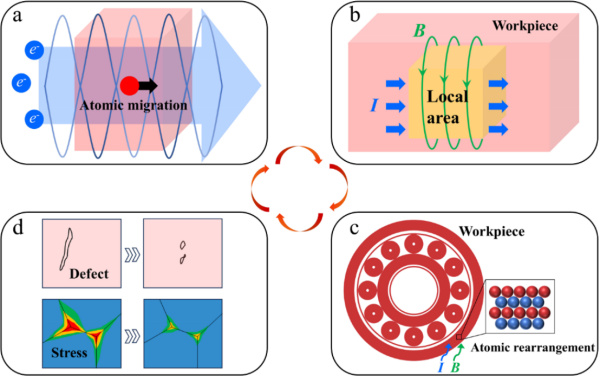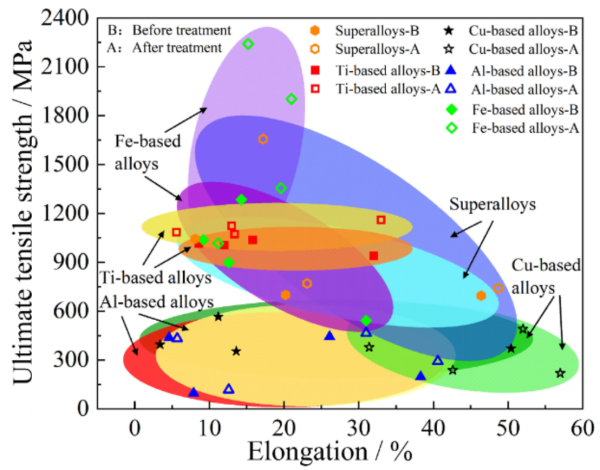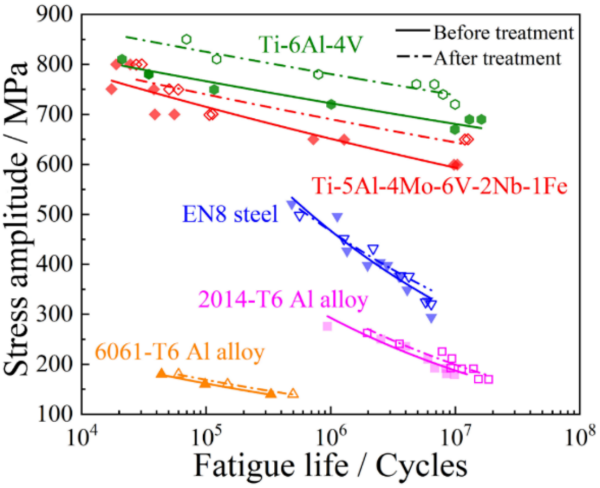
The team led by Professor Hua Lin from the School of Automotive Engineering of WUT collaborated with Professor Zhang Laichang from Edith Cowan University, Australia. They have published a review paper titled "Electromagnetic treatment enhancing performance of metal materials: A review, 153 (2025) 101488" in the international academic journal Progress in Materials Science (IF = 33.6). Summarizing nearly two decades of research achievements, the team provides a detailed review and outlook on the connotation, research ideas, and domestic and international research progress in the field of electromagnetic treatment. The paper takes Wuhan University of Technology as the first completion unit and the first corresponding unit. Professor Xie Lechun and Doctoral Candidate Sun Hongxin are the co-first authors, and Professor Hua Lin and Professor Zhang Laichang are the co-corresponding authors.
Electromagnetic treatment technology (including electric field, magnetic field, and electromagnetic field coupling treatment) can achieve energy transfer at the atomic scale through high transmission rates and high energy flux densities, thereby regulating the microstructure and mechanical properties of materials. Currently, electromagnetic treatment technology has been applied in related industrial fields, but the systematic research on its mechanism is still incomplete. This paper summarizes various effects of electromagnetic treatment, including energy transfer and action mechanisms, targeted effects, characteristics at extreme spatiotemporal scales, and defect repair effects of electromagnetic treatment, as shown in Figure 1. The mechanisms of electromagnetic treatment are elucidated through thermal effects and non-thermal effects.

Figure 1 Characteristics of electromagnetic treatment
Electromagnetic treatment technology can precisely regulate the microstructural characteristics of metal materials, effectively improve the residual stress state and corrosion resistance, and significantly enhance the wear resistance, impact toughness, fatigue resistance, and other properties of metal materials, as shown in Figure 2.


Figure 2 Comparison of material properties before and after electromagnetic treatment
Electromagnetic treatment significantly enhances the processing performance of metal materials, not only improving plastic deformation capacity but also key mechanical performance indicators such as yield strength and hardness. In terms of material processing, electromagnetic treatment technology has been successfully extended to various processes such as cutting, grinding, drilling, welding, sintering, coating, and plastic forming, as shown in Figure 3. Electromagnetic treatment technology has been applied in fields such as material preparation, material processing, material forming, and additive manufacturing.

Figure 3 Applications of electromagnetic treatment in material processing
This paper comprehensively expounds the structure-performance relationship among electromagnetic parameters, microstructure, and mechanical properties for the first time. It systematically summarizes multiple action mechanisms such as thermal effects, non-thermal effects, electromagnetic induction, and the coupling of electromagnetic fields and thermomechanical fields. It reveals the complexity, multi-scale, and multi-dimensional characteristics of interactions between electromagnetism fields and materials, providing theoretical guidance and technical support for the development of high-performance metal materials. This research work is supported by projects such as the National Key Research and Development Program and the National Natural Science Foundation of China.
Written by: Xie Lechun
Rewritten by: Lin Qiaochu
Edited by: Wang Jingjing
Source: School of Automotive Engineering
|
|